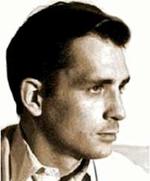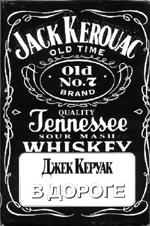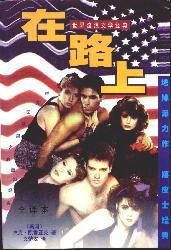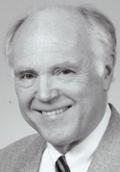 Neal Cassady
Neal Cassady
The Beat Generation launched a movement in the 1940s that has had a telling effect on our culture. This generation of young Americans, seeing the ovens of Auschwitz and what atomic bombs did, sought escape and enlightenment through sex, drugs, modern jazz, and Eastern mysticism
They also wrote books, most notably Howl and Other Poems by Allen Ginsberg, On the Road by Jack Kerouac, and The Naked Lunch by William Burroughs. This year is the 50th anniversary of Howl. The golden anniversary of On the Road will be celebrated next year and that of Naked Lunch, in 2009.
 Jack Kerouac
Jack Kerouac
The Beat movement began in 1944 when Kerouac and Ginsberg, at Columbia University, met William Burroughs, a Harvard graduate who was ten years their senior. A fourth person, Neal Cassady, also played a pivotal role in it.
For Kerouac and Ginsberg, Neal Cassady was the inspiration and guiding light of the Beat Generation. They met him in 1946 when he came to New York to visit a friend at Columbia. Neal was raised in the slums of Denver by a "wino hobo" father, his mother having died when he was an infant. He was a live wire — as Kerouac puts it, a sinner but also a kind man who always picked up the worst helpless hitch hikers he could find. In Ginsberg’s Howl, Neal Cassady is "N.C.," the "secret hero of these poems," the celebrated "cocksman and Adonis of Denver" whose ultimate purpose in "ecstatic and insatiate" copulation is to achieve spiritual enlightenment.
 Allen Ginsberg
Allen Ginsberg
The Beat movement started in New York, but when Cassady settled in San Francisco with his wife Kerouac and Ginsberg went there to see him.
On October 7, 1955 Beat writers in San Francisco held their first poetry reading at the Six Gallery. Announced as "6 Poets at 6 Gallery," it was a signal event in the history of American letters. Ginsberg read Howl, with its famous first line, "I saw the best minds of my generation destroyed by madness, starving hysterical naked." Kerouac and Cassady were there, urging the poets on and passing around jugs of wine. Describing the event in The Dharma Bums, Kerouac writes, "I followed the whole gang of howling poets to the reading…that night, which was, among other things, the night of the birth of the San Francisco Poetry Renaissance. Everyone was there."
 William Burroughs
William Burroughs
The New York Times sent Richard Eberhart, an establishment poet who was the Poet in Residence at Dartmouth College when I was a student there, to write a report on this "Renaissance." In an article titled "West Coast Rhythms," published in the The New York Times Book Review September 2, 1956, he noted that with regard to Beat poets, "Ambiguity is despised, irony is considered weakness, the poem as a system of connotations is thrown out in favor of long-line denotative statements. Explicit cognition is enjoined. Rhyme is outlawed. Whitman is the only god worthy of emulation." Hearing Ginsberg read Howl, he writes, "The most remarkable poem of the young group is Howl… a howl against everything in our mechanistic civilization which kills the spirit… It is Biblical in its repetitive grammatical build-up… It lays bare the nerves of suffering and spiritual struggle. Its positive force and energy come from a redemptive quality of love, although it destructively catalogues evils of our time from physical deprivation to madness."
 The City Lights Bookstore, run by Lawrence Ferlinghetti, was a magnet for Beat writers in San Francisco. Ferlinghetti published Howl in October 1956 in a first printing of 1,000 copies, printed in England. Sold only in San Francisco and New York in a few bookstores, it attracted little notice until a second printing six months later was seized by U.S. Customs, and local police arrested Ferlinghetti and his store manager for publishing and selling obscene material. A highly publicized court trial followed, which found the book not obscene. As Ferlinghetti put it in an article in the San Francisco Chronicle, "It is not the poet but what he observes which is revealed as obscene. The great obscene wastes of Howl are the sad wastes of the mechanized world, lost among atom bombs and insane nationalisms." Lawrence Ferlinghetti, a first-rate poet himself, is now 86 years old and remains active.
The City Lights Bookstore, run by Lawrence Ferlinghetti, was a magnet for Beat writers in San Francisco. Ferlinghetti published Howl in October 1956 in a first printing of 1,000 copies, printed in England. Sold only in San Francisco and New York in a few bookstores, it attracted little notice until a second printing six months later was seized by U.S. Customs, and local police arrested Ferlinghetti and his store manager for publishing and selling obscene material. A highly publicized court trial followed, which found the book not obscene. As Ferlinghetti put it in an article in the San Francisco Chronicle, "It is not the poet but what he observes which is revealed as obscene. The great obscene wastes of Howl are the sad wastes of the mechanized world, lost among atom bombs and insane nationalisms." Lawrence Ferlinghetti, a first-rate poet himself, is now 86 years old and remains active.
 Relegated to the status of a literary artifact 25 years ago, Howl is now acknowledged to be one of the classic poems of the 20th century. Three new books that address its importance are Jonath Raskin’s American Scream: Allen Ginsberg’s Howl and the Making of the Beat Generation (2004); Howl for Now: A Celebration of Allen Ginsberg’s Epic Protest Poem, edited by Simon Warner (2005); and The Poem that Changed America: "Howl" Fifty Years Later, edited by Jason Shinder (2006).
Relegated to the status of a literary artifact 25 years ago, Howl is now acknowledged to be one of the classic poems of the 20th century. Three new books that address its importance are Jonath Raskin’s American Scream: Allen Ginsberg’s Howl and the Making of the Beat Generation (2004); Howl for Now: A Celebration of Allen Ginsberg’s Epic Protest Poem, edited by Simon Warner (2005); and The Poem that Changed America: "Howl" Fifty Years Later, edited by Jason Shinder (2006).
The first edition of Howl and Other Poems cost 75 cents. Today a signed, first printing of this pocket-sized, 44-page paperback in fine condition is priced at more than 10,000 times its original cover price ($7,500.00).
Howl is Number 4 in the City Lights’ Pocket Poet Series. Other notable titles in the series are Ferlinghetti’s Pictures of the Gone World (#1); Denise Levertov’s Here and Now (#7); Georgory Corso’s Gasoline (#8); Robert Duncan’s Selected Poems (#10); Ginsberg’s Kaddish and Other Poems (#14) and Reality Sandwiches (#18), which contains "The Green Automobile," a fantasy about Neal Cassady; and Jack Kerouac’s Scattered Poems (#28).
Ginsberg tirelessly promoted his fellow beat writers, as this dedication for Howl shows:
Jack Kerouac, new Buddha of American prose, who spit forth intelligence into eleven books written in half the number of years (1951—1956) — On the Road, Visions of Neal, Dr. Sax, Springtime Mary, The Subterraneans, San Francisco Blues, Some of the Dharma, Book of Dreams, Wake Up, Mexico City Blues, and Visions of Gerard — creating a spontaneous bop prosody and original classic literature. Several phrases and the title of Howl are taken from him.
William Seward Burroughs, author of Naked Lunch, an endless novel which will drive everyone mad.
Neal Cassady, author of The First Third, an autobiography (1949) which enlightened Buddha.
All these books are published in Heaven.
Lucien Carr, recently promoted to Night Bureau Manager of New York United Press. [Lucien Carr asked to have his name removed from the dedication, which Ginsberg did in later printings.]
This heretofore underground movement (1944—1956) entered its public phase, which lasted until the Vietnam War began in 1965.
 Neal Cassady is the central character in On the Road. Kerouac writes that he is "tremendously excited with life" and generates "a kind of holy lightning…flashing from his excitement and his visions." Named Dean Moriarty in the novel, Kerouac says he has "got the secret we are all trying to find." He is "the HOLY GOOF" and "a new American Saint." The book ends with, "I think of Dean Moriarty, I even think of Old Dean Moriarty the father we never found. I think of Dean Moriarty."
Neal Cassady is the central character in On the Road. Kerouac writes that he is "tremendously excited with life" and generates "a kind of holy lightning…flashing from his excitement and his visions." Named Dean Moriarty in the novel, Kerouac says he has "got the secret we are all trying to find." He is "the HOLY GOOF" and "a new American Saint." The book ends with, "I think of Dean Moriarty, I even think of Old Dean Moriarty the father we never found. I think of Dean Moriarty."
Kerouac employed a writing style he called "spontaneous bop prosody," inspired by the improvisations of bop jazz musicians, notably Charlie Parker. He famously typed On the Road onto a 120-foot long scroll of Japanese tracing paper over a three-week period. But in fact he spent years working on it, beginning with penciled notes in 3 x 5 inch pocket notebooks that he always carried with him. He prepared multiple drafts before typing the scroll, other versions after the scroll that publishers rejected, along with three different manuscripts prior to publication. One-fourth of the Kerouac Archive that the estate sold to the New York Public Library (in 2001), consisting of notebooks, journals, correspondence, manuscripts, etc., is related to On the Road. Two other titles for the book Kerouac considered using were The Hipsters and The Gone One.
Gilbert Milstein wrote a glowing review of the book for The New York Times, calling it "an authentic work of art" and its publication "an historic occasion." Most reviews, however, panned On the Road, including one in The New York Times Book Review the following Sunday. This critic (David Dempsey) deplored the book’s subject matter and claimed that what Kerouac dubbed the "Beat Generation" was only a "sideshow" of "freaks." Kerouac replied, "The critics only noticed the freneticism and overlooked the mild Huckleberry Finn spinebone of the story." He called it a "sad and tender book… about goodhearted kids in pain of soul doing wild things out of desperation."
Milstein, a substitute reviewer for the Times (its regular book critic, Orville Prescott, was on vacation), was right. On the Road arguably has had a greater impact on its readers than any other work of fiction in the 20th century. Booksellers in the UK, polled by Blackwell Online, rank On the Road as one of the 50 Books that have had a significant and lasting impact on the world, along with the Bible, the Koran, and Alex Comfort’s The Joy of Sex. I read On the Road when it was published, and it had a profound effect on me. It induced me to spend the summer before going to medical school, in 1961, hitchhiking around Europe. I studied art and, saxophone in hand, played with jazz groups in clubs on the Left Bank in Paris and in Munich.
 On the Road has been translated into 33 languages. Their dust jackets are interesting. The ones for the Polish and Czech translations, for example, focus on the road itself, the Russian one on the booze, the Chinese one on the women, and the dust jacket for the Finnish translation, on Kerouac’s introspection.
On the Road has been translated into 33 languages. Their dust jackets are interesting. The ones for the Polish and Czech translations, for example, focus on the road itself, the Russian one on the booze, the Chinese one on the women, and the dust jacket for the Finnish translation, on Kerouac’s introspection.
Kerouac’s novels are autobiographies in fictional form, like those by Goethe and German romantic novelists. He called them his "true-story novels." He wrote 14 novels that he viewed as "chapters" of "one vast book," which he named The Duluoz Legend. The Legend confronts death, madness, and God. Its central theme is the loss of life as it is lived, the end result being, as one of my cardiac surgery colleagues puts it, that "No one gets out of this life alive."
 The Town and the City serves as the prelude to The Duluoz Legend (like Das Rhinegold does to Richard Wagner’s Ring of the Nibelung). In this novel, Kerouac, as Peter Martin, grows up in a working class home in a small mill town, weathers the death of his older brother, becomes a football hero, and goes off to an Ivy League college. At the end of the novel Peter renounces his athletic and educational ambitions and sets out on a "long journey" seeking self-definition and spiritual enlightenment. The publisher sent advance copies of The Town and the City to reviewers with a letter that said, "This is a big, new novel by John Kerouac — a name you have never before heard — one of the most exciting new talents to come to American readers since Thomas Wolfe."
The Town and the City serves as the prelude to The Duluoz Legend (like Das Rhinegold does to Richard Wagner’s Ring of the Nibelung). In this novel, Kerouac, as Peter Martin, grows up in a working class home in a small mill town, weathers the death of his older brother, becomes a football hero, and goes off to an Ivy League college. At the end of the novel Peter renounces his athletic and educational ambitions and sets out on a "long journey" seeking self-definition and spiritual enlightenment. The publisher sent advance copies of The Town and the City to reviewers with a letter that said, "This is a big, new novel by John Kerouac — a name you have never before heard — one of the most exciting new talents to come to American readers since Thomas Wolfe."
The journey continues in earnest in On the Road. Gregory Stephenson, in The Daybreak Boys: Essays on the Literature of the Beat Generation (1990), describes Kerouac’s journey this way: "[For Kerouac] the journey is a quest, the road a mode of initiation. The objects of the quest (selfhood, love, God, community) are elusive; they are grails that appear and vanish, are recovered and lost again, but toward whose final possession the quester approaches nearer and nearer."
Visions of Cody, the third novel Kerouac wrote in the series, which was not published in full until after his death, explores in greater detail his relationship with Neal Cassady (here as Cody Pomeray).
 The next novel in the series, Doctor Sax: Faust Part Three, is the keystone of The Duluoz Legend. Kerouac’s inspiration for it was the radio program, The Shadow. He intended it to be a sequel to Goethe’s Faust Parts One & Two. The book is about boyhood fantasies, growing up, confronting death, and dealing with pubescence and its attendant sexuality. It addresses the enigma of existence and provides the mythic content for the other novels in the legend. Count Condu in the novel is a vampire. Doctor Sax is modeled on William Burroughs and himself. And there is a monstrous snake. When it was published, in 1959, The New York Times dismissed Doctor Sax as "a largely psychopathic, pretentious and unreadable farrago of childhood fantasy play."
The next novel in the series, Doctor Sax: Faust Part Three, is the keystone of The Duluoz Legend. Kerouac’s inspiration for it was the radio program, The Shadow. He intended it to be a sequel to Goethe’s Faust Parts One & Two. The book is about boyhood fantasies, growing up, confronting death, and dealing with pubescence and its attendant sexuality. It addresses the enigma of existence and provides the mythic content for the other novels in the legend. Count Condu in the novel is a vampire. Doctor Sax is modeled on William Burroughs and himself. And there is a monstrous snake. When it was published, in 1959, The New York Times dismissed Doctor Sax as "a largely psychopathic, pretentious and unreadable farrago of childhood fantasy play."
Novels 5—7 in the series, Maggie Cassidy, The Subterraneans, and Tristessa, deal with Kerouac’s love affairs, beginning with Mary Carney, as Maggie Cassidy, his first love. Visions of Gerard, number 8 in the series, is about the life and death of his older brother, who died at the age of nine from rheumatic fever when Jack was four years old.
The Dharma Bums is next. It recounts the Six Gallery poetry reading and Kerouac’s travels through Seattle to Desolation Peak in the Cascade Mountains of Washington State, where he sought solitude manning a fire lookout there. Novels 10 and 11 are Lonesome Traveler, a collection of essays on traveling, and Desolation Angels, which focuses on his summer alone on Desolation Peak.
The last three "chapters" in The Duluoz Legend are Big Sur, Satori in Paris, and Vanity of Duluoz. Big Sur is a chronicle of Kerouac’s six weeks in California after leaving Desolation Peak. It deals with his alcoholism, the battle between the good angels and evil angels for his soul, and his breakdown at Ferlinghetti’s cabin on the Pacific coast. As Gregory Stephenson puts it, alcohol was Kerouac’s "last refuge from and the remedy against the horror and pain of life."
Satori in Paris is a pivotal work in The Duluoz Legend because it recounts Kerouac’s shift from Buddhism back to Christianity, with its emphasis on loving-kindness. In this book, Kerouac travels to France. He writes, "I had come to France and Brittany just to look up this old name of mine which is just about three thousand years old and was never changed in all that time, as who would change a name that simply means House (Ker), in the Field (Ouac)."
Although Kerouac was drunk most of the time in 1965 when he wrote this book, and would die four years later from complications of alcoholism, he nevertheless paid close attention to how the book was being edited, as his correspondence with the publisher shows. With regard to Galley 44, for example, he wrote, "Only important change I want to make, because my recent studies in Ency.Brit.XI Ed [Encyclopdedia Brittanica, Eleventh Edition, 1911], shows that Ker might mean stone or stone fortress, and ouac u2018on the sea.’ So stick this in, and in parentheses, to complete the book." (The published book does not incorporate this addition.)
The 14th and last novel in the series, Vanity of Duluoz is the coda to The Duluoz Legend. Kerouac, the narrator, is off the road, married to the sister of a childhood friend, and, once again, embracing Catholicism, this time with a vision that has transformed him from "desperate doubter to determined believer." Kerouac concludes The Duluoz Legend with this sentence: "Hix calix!… u2018Here’s the chalice,’ and make sure there’s wine in it."
 William Burrough’s novel The Naked Lunch was published in 1959 in France, by Olympia Press, in its English language "Travellers Companion Series" (number 76). Grove Press published it in the U.S. in 1962, as Naked Lunch.
William Burrough’s novel The Naked Lunch was published in 1959 in France, by Olympia Press, in its English language "Travellers Companion Series" (number 76). Grove Press published it in the U.S. in 1962, as Naked Lunch.
On one level, Naked Lunch is a postmodern novel about drug addiction. But it is also, as Allen Ginsberg testified at the book’s obscenity trial in Massachusetts, about addiction on a larger scale, namely, addiction to power, addiction to material goods, and addiction to controlling others. It weathered that trial, the last one held against a book in the United States, and is now considered to be a modern classic.
As with Howl, one can anticipate that books analyzing the literary and cultural significance of Naked Lunch will be published on its 50th anniversary three years from now.
Five years ago the executor of the Kerouac estate sold the scroll for On the Road at auction for $2.43 million. Next year people will be celebrating the book’s 50th anniversary, which will coincide with the release of Francis Ford Coppola’s film version of it.
Western literature began with the Homeric epics the Iliad and the Odyssey. Like Odysseus in Homer’s poems, Kerouac in The Duluoz Legend is a restless adventurer that embarks on an epic journey — an Odyssean archetype of the indomitable wanderer in modern guise. On its 100th anniversary, bibliophiles will by then have put On the Road in its proper context as one chapter in The Duluoz Legend, which, in its entirety, will be celebrated as one of the great works of Western literature.
 (This article is adapted from a paper titled "On the Collecting Road with Writers of the Beat Generation" that I presented at the Fellowship of American Bibliophilic Societies Annual Symposium on May 13, 2006 in Seattle, Washington.)
(This article is adapted from a paper titled "On the Collecting Road with Writers of the Beat Generation" that I presented at the Fellowship of American Bibliophilic Societies Annual Symposium on May 13, 2006 in Seattle, Washington.)




